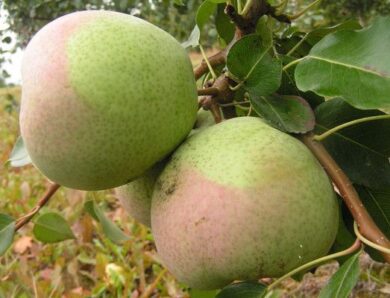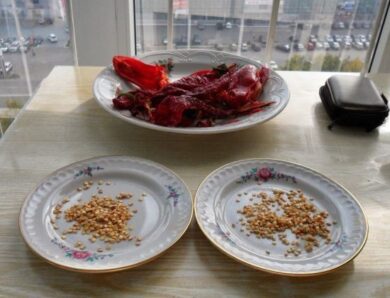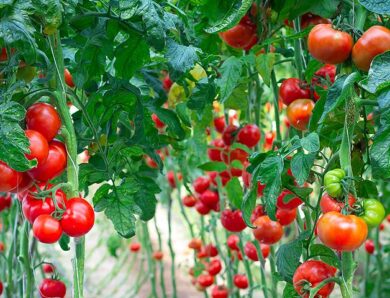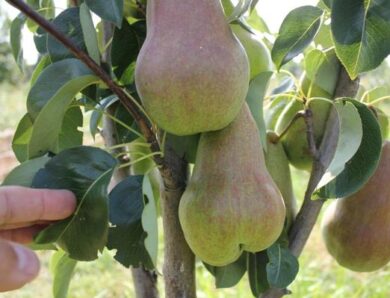Fodder beet: features of culture cultivation
Fodder beet is considered the most popular crop in animal husbandry. It is included in the winter months in the diet of rabbits, goats and cows. Everything, what you need to know about growing this crop, will be told in our today's article.
features of culture
Fodder beet was bred from a wild variety in the XVI century in Germany. This is where the spread of culture around the world began. The result of the active work of breeders were a variety of fodder beets. Some varieties can form roots weighing up to 10-15 kg.
Depending on the variety, the plant can form an underground part of different colors:
- white;
- red;
- orange;
- yellow.
Root crops have different pulp densities. The plant is characterized by the presence of white flesh, which is diluted ??pink or yellow rings. The most stable features of this culture are its form, the degree of deepening into the soil and the color of the fruit.
This is a biennial plant, which in the first year forms a lush rosette of green leaves, as well as thickened root. It can have a conical-oval, cylindrical, spherical or sac-shaped (depends on the variety). In terms of yield, those varieties are considered the best, which have a conical, baggy or cylindrical shape of the roots. The most productive are varieties with an underground part of the conical shape, as well as yellow, white and pink colors.
In the second season the plant forms weakly leafy stems, performing the function of peduncles. They form paniculate inflorescences, in which seeds are subsequently formed. They are used for plant propagation in the coming season.
Unlike varieties of semi-sugar beets and other types of roots, fodder species have no restrictions on the use of dairy products for cattle. It has to do with that, that vegetables are not capable of harming cows. At the same time fodder beet is able to significantly increase milk yield.
Due to the high content of various trace elements and fiber, this vegetable is the most popular product on farms and farms..
Soil requirements
Fodder beets are grown in open ground. To get a great harvest, for this culture it is necessary to choose the right soil. This plant prefers sandy and loamy soils, which have a high content of nutrients. This crop is often grown in floodplains. There is a lot of chernozem, which contributes to a rich harvest.
Do not choose to grow acidic and saline soils. The optimum acidity level for fodder beets is in the range of 6,2 to 7,5. Not suitable for growing plots, which are prone to waterlogging.
The second important point in choosing a place to plant this plant is to meet the requirements of crop rotation. Cereals will be excellent precursors for any variety of such beets, greens and beans.
When to sow seeds
To achieve an excellent harvest, fodder beet cultivation should be carried out within a certain time frame. It is worth noting, that fodder beet is characterized by a long growing season. Therefore, it should be planted early. The timing of planting material is determined by the following parameters:
- climatic conditions. In the southern regions of the country landing is carried out earlier, than in the northern regions;
- varietal features.
Usually planting seeds of this variety is performed from mid-March until the end of the month. But if weather conditions do not allow, then sowing dates are postponed to early April.
How to sow seeds
Growing fodder beets begins with sowing seeds. Sowing is allowed only after that, as the earth warmed up +7 degrees. This condition is usually met in mid-April.
Fodder beet has the following rules for sowing seeds:
- field before planting ore;
- mineral fertilizers are applied to the soil, compost and wood ash. The amount of fertilizer applied is determined depending on the structure and type of soil;
- planting material is selected and treated. Planting seeds can be done without prior preparation. But you can also use growth stimulants;
- seed placement is performed in pre-prepared furrows to a depth of 3 cm. The distance between them must be maintained 20-25 cm. The distance between the rows can reach 50-60 cm. It has to do with that, that the roots of this variety are formed quite large;
- after that the seeds are covered with earth.
Before planting, it is necessary to calculate the sowing rate. The calculations should be based on that, that for one running meter it is necessary to prepare approximately 12-15 g seeds. When choosing such a rate of sowing per hectare of land will be approximately 150 g of seed.
Proper planting and further cultivation will allow you to reap a great harvest (with the weight of roots in the area 12 kg).
Fodder beet is considered a moisture-loving crop. Watering is especially important in the initial stages of cultivation. Therefore, after the seeds were planted in the ground, it is important to water the beds regularly and abundantly. In this case, the first pale green shoots will appear, as soon as the air temperature rises slightly.
Technology of growing fodder beets
After planting the seeds are grown on the same principle, as well as sugar and table varieties. During the growing season fodder beet requires the following procedures:
- regular weeding. With a large number of weeds, the roots are formed small;
- when the first two leaves appeared in the beds, weeding of too dense plantings is carried out. Leave the strongest and largest stairs. Be sure to keep the distance between adjacent stairs;
- periodic loosening of the soil between rows. This will improve the access of oxygen to the underground part of the plant. It is recommended to carry out loosening after past rains and waterings;
- water application is carried out depending on weather conditions. It is important to frequent watering during the period of active root growth;
- watering is stopped about one month before harvest. This will allow the roots to better prepare for long-term storage. Stopping watering will protect them from rot;
- it is necessary to adhere to at least two top dressings with mineral fertilizers. Fertilizers are usually applied after thinning and one month after this procedure.
As we see, It is not so difficult to grow a fodder variety of beet in your garden.
Video "Details of planting fodder beets"
In this video you will learn about it, how to properly grow and plant fodder beets.




